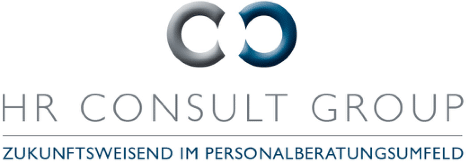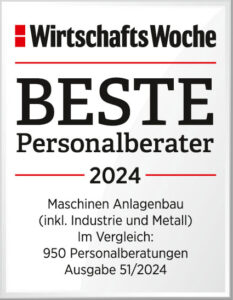Was unterscheidet ein erfolgreiches Unternehmen von einem weniger erfolgreichen? Natürlich bedarf es marktgerechter Produkte oder Dienstleistungen zu angemessenen Preisen. Darüber hinaus geht es aber auch um Führung, Organisation und Motivation des Teams sowie die richtige Kommunikation mit diesem Team.
Es braucht eine gute Führungskraft, den Kapitän, sowie die richtige Kultur. Die Führungskraft schafft zusammen mit einem kleinen Führungsteam Anreize und eine motivierende Atmosphäre für offene Diskussionsprozesse, in die die Ressourcen aller eingebracht werden. Der Vorgesetzte zeigt mit seinem Verhalten, dass er dem großen Ziel des gesamten Unternehmens dient und behält jederzeit den Überblick. Er entschärft Machtkämpfe und reduziert Politiken im Unternehmen. Zudem gibt er eine klare Rollenverteilung vor und entscheidet, wann Strategieänderungen, auch Paradigmenwechsel genannt, notwendig sind. Alle verständigen sich darauf, die Gesamtstrategie auf mehrere Teilstrategien herunterzubrechen.
Dieses Szenario ist in multinationalen Teams komplexer, weil dort kulturelle Befindlichkeiten bestehen und diese eine zusätzliche Herausforderung darstellen. So sind zum Beispiel viele Asiaten häufig weniger direkt in der Formulierung und Einforderung von Zielen und agieren auf den ersten Blick oft weniger proaktiv als beispielsweise ihre deutschsprachigen Kollegen. Dies kann aufgrund falscher Erwartungen zu Missverständnissen führen. Besser ist es, einen respektvollen, die interkulturellen Unterschiede beachtenden Umgang miteinander zu pflegen, der Konflikte durchaus zur effektiven Zielerreichung benutzt.
„Andersartigkeit ist ein Gewinn“ lautet das Motto: Diese Methode trägt letztlich entscheidend zum Gelingen von Teilstrategien und zum Erreichen des großen Ziels bei.
Teamgeist – leichter gesagt als getan:
Teambuilding ist kein einfaches Instrument. Ein wesentliches Risiko liegt in den unterschiedlichen Spielregeln und Motivationen. Diese gilt es im Detail aufzudecken und dem Gesamtziel unterzuordnen. Dabei ist wichtig, dass die Resultate nicht Einzelnen, sondern dem Team zugeschrieben werden. Bestehende Konflikte und deren Lösung verstehen sich als notwendige, respektvolle und zugleich zielgerichtete Kommunikation auf dem Weg zum Erfolg. Hier sind informelle und direkte, aber jederzeit verständliche Dialoge hilfreich. Hinzu kommt die Wertschätzung verschiedener Charaktere, wie zum Beispiel Querdenker, Spezialisten und Generalisten.
Aber wie ist tatsächlich ein derartiger Teamgeist zu erreichen?
Vielleicht helfen folgende Hinweise:
- Struktur: Es bedarf einer passenden und stetigen Anbindung aller internationalen Mitarbeiter an das Hauptquartier, gepaart mit einer guten Ausbildung und einem entsprechenden Training.
- Führung: Diese sollte situativ angepasst sein, „Führung als Vorbild“ zum Leitmotiv haben und sich auch auf der Grundlage der Gegenseitigkeit, der sogenannten Reziprozität, erklären: So würde der Dialog etwa wie folgt beginnen: „Bitte versetzen Sie sich in meine Lage. Wie würden Sie an meiner Stelle handeln, um unsere Ziele zu erreichen?“
- Schulung: Darüber hinaus sollten alle Mitarbeiter in internationale Projekte eingebunden werden und an möglichst vielen Best-Practice-Prozessen teilhaben.
- Authentizität: Ein gutes Beispiel für ein hohes Identifikationspotenzial sind konkrete Beispiele von Mitarbeitern, die gleichzeitig gefördert und gefordert wurden und die innerhalb des Unternehmens im In- und Ausland nachvollziehbare Karrieren gemacht haben. Solche schaffen eine hohe Identität und auch den Anreiz, es den beförderten Kollegen gleichzutun.
- Karrieremöglichkeiten: Konkrete Perspektiven für die Karriere des Einzelnen sind wichtig, aber nicht kurz-, sondern eher mittel- und langfristig ausgelegt.
Gerade heute, im Zeitalter der weltweiten, schnellen und mitunter auch redundanten Kommunikation spielen diese Aspekte eine besondere Rolle. Motivation und Führung machen den Unterschied aus! Insbesondere im Hinblick auf Matrix- und Projektstrukturen, die immer häufiger auftreten, bilden die spezifische Motivation des Einzelnen und die richtige Führung des Teams wesentliche Schlüssel zum Erfolg, um damit ein „Wir-Gefühl“ nachhaltig zu erreichen.




